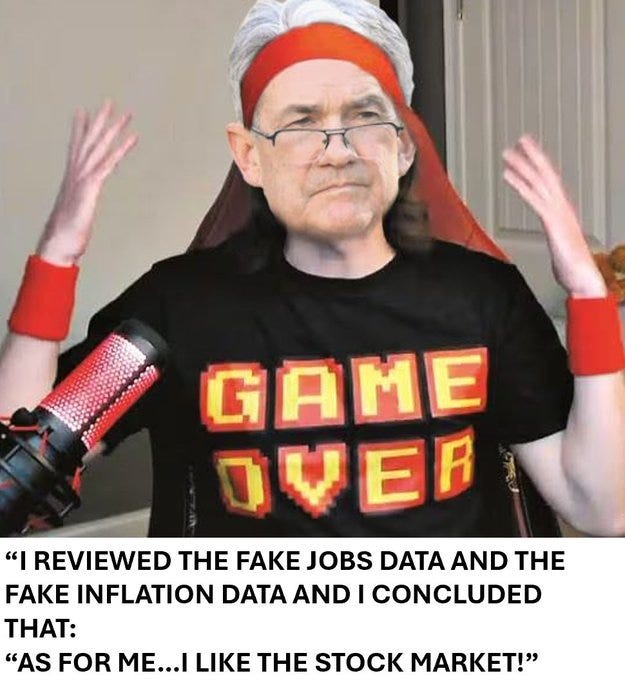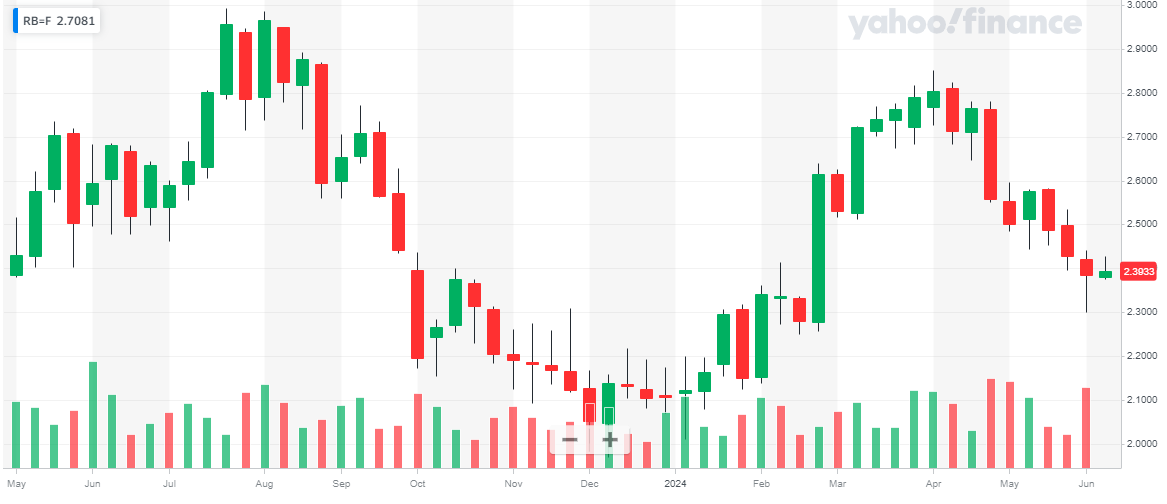The interest rate decision

Today was FOMC day. They decided to keep interest rates steady at 5.5%.
“In support of its goals, the Committee decided to maintain the target range for the federal funds rate at 5-1/4 to 5-1/2 percent. In considering any adjustments to the target range for the federal funds rate, the Committee will carefully assess incoming data, the evolving outlook, and the balance of risks. The Committee does not expect it will be appropriate to reduce the target range until it has gained greater confidence that inflation is moving sustainably toward 2 percent.”
Not much in the statement has changed from the previous meeting at the beginning of May. This meeting, however, came with economic projections. The most important, of which, is the FOMC participants’ assesment of appropriate monetary policy. This is the where the Fed members predict where they think interest rates will be.
By the end of 2024; 8 members think we’ll be at 5.0, 7 are guessing 5.25, and 4 estimate 5.5. Taken all together, it means the concensus is 1, 25-basis point cut by year-end.
Now making projections is tough enough. Making forward comments about financial uncertainty is crazy talk. You can easily get distracted with recency bias or fall into a trap of using experience-based estimates without taking into account the strength of your experience. It becomes easy to discount extreme predictions. Daniel Kahneman covered this idea of making projections using prospect theory in his book “Thinking, Fast and Slow”. He stated that the reference point from which you approach a problem influences how you will go about solving that problem. If you’ve never encountered a rising interest rate environment, how would you know what the interest rate should be? If you are a PhD economist, does your schooling experience bias you towards lowering interest rates? What about a financial commentator with 40 years of experience in a decling interest rate environment?
Still with this concensus estimate of 1 rate cut, the CME FedWatch tool is predicting two.
I guess 40 years of experience dies hard.
There was a press conference that followed the decision.
It wasn’t that great unless you count the part where Powell admitted that the payroll numbers are questionable. The majority of the questions asked of Powell were of poor quality. It felt like most of those asking questions were new to an FOMC press conference or didn’t understand what the Fed actually does.
Today we also got Consumer Price Index data.
The CPI (blue line) came in at 3.3% and ‘core’ (red line) at 3.4%.
BoA’s CPI heatmap showed that shelter is still a big deal. Though it is painted green, at 5.41% it should be red. I covered the sticky shelter costs in last month’s inflation report.
I highlighted that active listings pulled from realtor.com showed that fewer homes were being listed for sale and that 60% of mortgages were with rates at or below 4%.
“60% of outstanding mortgages have a rate at or below 4%. 79% are at or below 5%. This has added tremendous pressure on real estate services and shelter costs. What happens when there are 10 families and only 8 homes for sale? Answer, housing inflation stays sticky. Since shelter accounts for nearly 33% of the core cpi, expect tomorrow to show continued 3%+ inflation.”
Nothing has changed here as listings aren’t returning to the 2016-2019 levels and nobody wants to give up a 4% mortgage rate.
In addition, energy costs are beginning to creep back into the picture (up 3.69% y/y). We’ll see if there can be a concerted effort to keep energy costs, specifically gas, low until the election.
I also wanted to highlight a few things going on with individual stocks.








